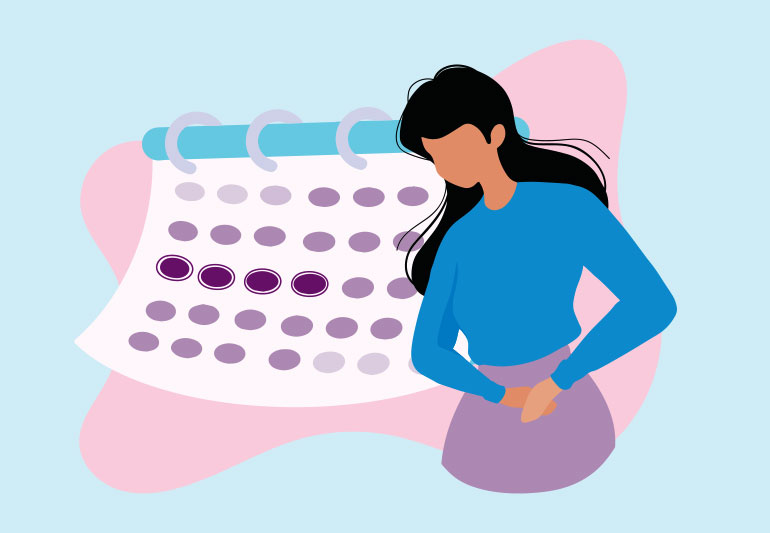7 Effective Ways to Reduce Menstrual Pain
Your period is approaching, and you are becoming increasingly weak. Many women suffer from menstrual cramps once a month, which can cause discomfort, circulatory problems, abdominal cramps, and even chills. We present to you our 7 insider tips for dealing with menstrual pain.
1. Sport and Exercise
Many women find muscle contraction uncomfortable or even painful. The contraction of the muscles reduces the blood supply to the uterus or abdomen, causing additional pain. Exercise has been shown in studies to help reduce the intensity and duration of period pain. This holds true for both light physical activity during menstruation and regular training. Menstrual cramps can be reduced by exercising more frequently. During the period, even light physical activity can help alleviate pain. Try yoga, cycling, or going for a walk.
2. Alter Your Diet
A BMC Women’s Health study looked at how diet affects menstrual pain. Researchers discovered that eating a lot of sweet and salty snacks, desserts, coffee, salt, fruit juices, and added fat increased your chances of having moderate to severe menstrual cramps three to four times. To prevent cramps, eat a healthy, balanced diet. You should abstain from alcohol and nicotine.
3. Refusing to Say No
You planned the big get-together with all your friends two weeks ago (when you were fit as a fiddle, just before you ovulated), and now you’re not in the mood for it? You have tickets to the super concert, but the thought of it makes you nervous? Then simply say no. Menstrual problems are exacerbated by stress, so keep your cool and say no! That’s a promise: the world will continue to turn even if you log out of daily life during your period. By the way, women are three times more productive in the weeks following their period!
4. Magnesium
The muscle contractions required to break down the mucous membrane consume a lot of magnesium, which we notice when our inner pig bitch asks us the same question: “Where can I get something sweet asap?”
”. This is a common misconception: craving something sweet simply indicates that our body needs to replenish its magnesium stores. And he excels at it with bananas, cashews, sunflower seeds, linseed, and raspberries.
5. Good News for Chocolate Addicts
Chocolate is not inherently bad; you should just avoid the sugar in chocolate. Cocoa, on the other hand, contains many antioxidants and, as a result of the magnesium it contains, has an anti-inflammatory and antispasmodic effect. A piece of dark chocolate is therefore highly recommended, but it must contain at least 70% cocoa.
6. Tea
A variety of herbs have antispasmodic and anti-inflammatory properties. They can help with menstrual pain when made into a tea. Teas with yarrow, cinquefoil, lady’s mantle, verbena, nettle, and chaste tree are examples (see above).
7. Breathing correctly and moving
Yes, exercising during menstruation is not as difficult as it may appear. Cramping and tension are sometimes caused by a lack of physical activity, which causes tension to build up. Inadequate breathing and a lack of exercise prevent the body from “adjusting.” The ovaries absorb the resulting tension, making them immobile and rigid. When there is too much tension, the body attempts to compensate by using inappropriate muscles and nerves. This causes pain and cycle disruptions.

